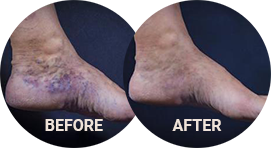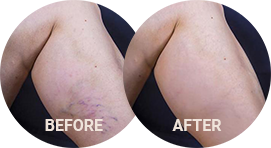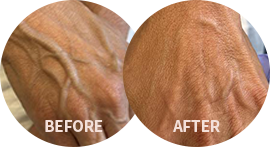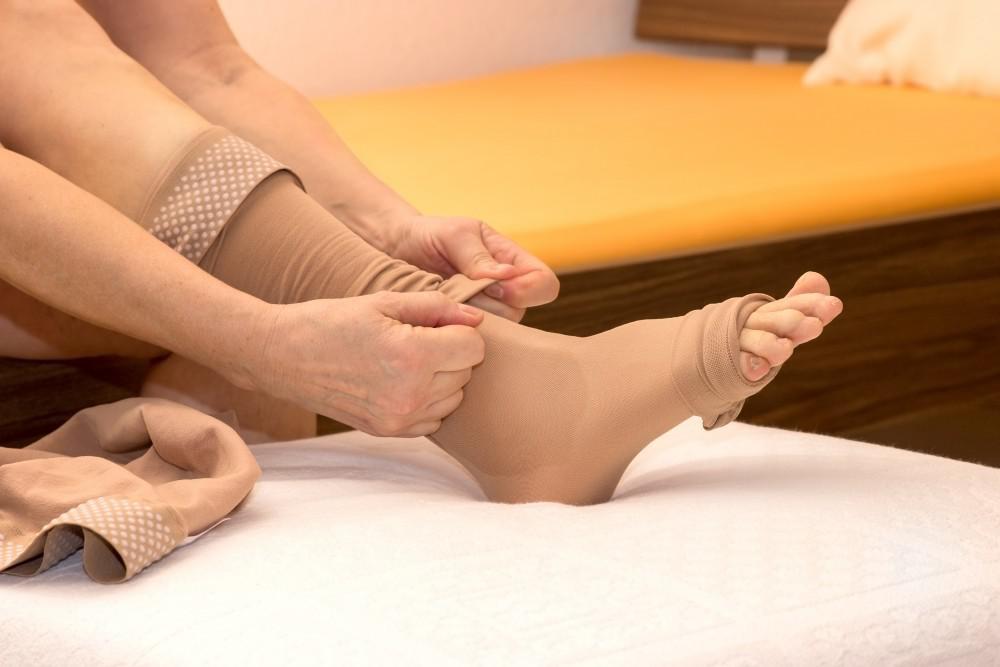Dark areas of skin on your legs and ankles can make you feel self-conscious about keeping your legs covered, even during warmer weather. Beyond being a cosmetic concern, any skin discoloration on your legs and ankles could be a sign of a variety of underlying vein conditions.
At Premier Vein Clinic, Dr. David Naar, a board-certified vascular surgeon, expertly identifies the underlying causes of areas of skin darkening and recommends effective treatment options, most of which are minimally invasive and nonsurgical.
Underlying Causes of Skin Darkening
A variety of vein conditions can lead to areas of dark and discolored skin on your legs and around your ankles. These chronic conditions and diseases include:
Spider and varicose veins
Spider and varicose veins can significantly alter the appearance of your legs and other areas of your body. Varicose veins often appear red, blue, and bulging and can lead to discoloration of your skin in the affected area. Spider veins are smaller versions of varicose veins and typically occur on your legs, feet, or face.
Peripheral artery disease (PAD)
Peripheral artery disease is a type of arterial insufficiency in which your blood doesn’t flow as it should because of narrowing arteries. Usually, PAD occurs in your legs, but it can also affect other areas of your body. PAD can cause skin discoloration in the affected area.
Deep vein thrombosis (DVT)
A deep vein thrombosis is when a blood clot forms in a deep vein, typically in one of your legs. This is a serious condition that can lead to a blood clot traveling to your lungs, and it may also include changes in skin color around where the clot has formed.
Stasis dermatitis and venous ulcers
Sores that won’t heal and swelling around your ankles are common signs of stasis dermatitis and venous ulcers. Your legs and ankles may feel itchy, and you can develop ulcers, which are open wounds that don’t heal. If you have stasis dermatitis, the skin around your ankles may become thicker and darker in color, too.
Treatment for Skin Discoloration
Depending on the root cause of your skin discoloration, Dr. Naar may recommend several different treatment options, including:
Endovenous ablation
In addition to relieving the symptoms of varicose veins, endovenous ablation, a minimally invasive procedure, also helps treat skin darkening and discoloration. This in-office vein treatment is minimally invasive and has a high success rate.
Endovenous ablation closes collapsed veins so blood can reroute to healthier veins. Treatment can also relieve pain, reduce swelling, and improve skin ulcers.
Compression socks and medications
Compression socks improve circulation, and when paired with medications they can help relieve the itchy, irritated skin associated with stasis dermatitis and help heal skin ulcers. Over time, as your circulation improves and wounds heal, skin discoloration also diminishes.
Sclerotherapy
Sclerotherapy is ideal for treating spider veins and small varicose veins. This in-office procedure is minimally invasive and offers a quick recovery and results.
During sclerotherapy, Dr. Naar injects a special solution into your veins that causes them to dissolve. As your body clears the waste from the veins, your skin discoloration becomes less visible or is gone altogether.
Surgical intervention
If more conservative treatments don’t alleviate certain underlying vein conditions that are causing your skin discoloration, Dr. Naar may recommend surgical procedures such as angioplasty, bypass surgery, or thrombolytic therapy to dissolve blood clots.
Additionally, for many vein diseases, lifestyle changes — such as quitting smoking, lowering your blood pressure, losing weight, and getting blood sugar under control — can alleviate symptoms and help reduce the skin’s appearance.
Skin darkening is a sign of an underlying condition that you don’t want to wait to identify and treat. Contact our knowledgeable team today by calling the office in Westlake, Ohio, at 440-641-0433, or request an appointment online to book your consultation.





